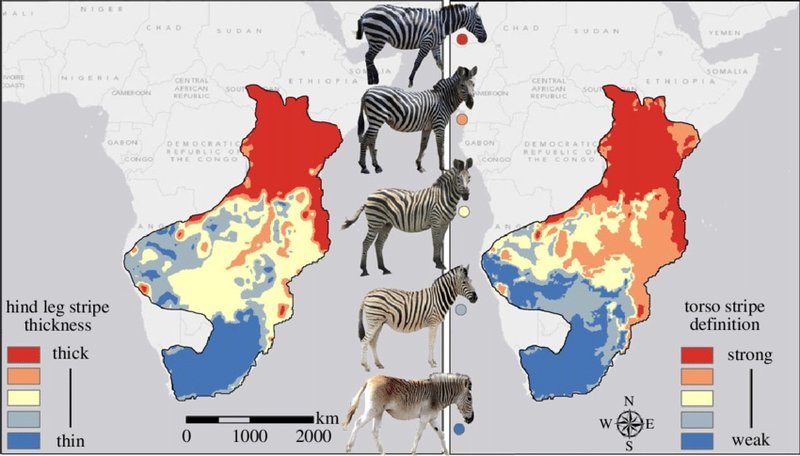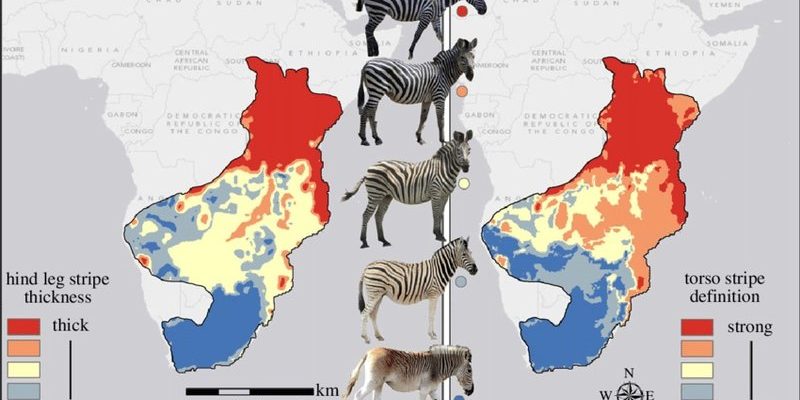
Zebras belong to the equine family along with horses and donkeys. They’re well-known for their unique stripes, which serve various purposes including camouflage, social signaling, and even face recognition among their peers. Understanding where zebras live gives us a window into their daily lives and the environments that shape their behaviors. So, grab a cup of coffee, sit back, and let’s explore the amazing habitats that support these incredible animals.
Types of Zebras and Their Ranges
Zebras are generally divided into three main species: the **Plains zebra**, the **Grevy’s zebra**, and the **Mountain zebra**. Each of these species has adapted to different types of habitats and geographic locales across Africa.
Plains Zebra
The most common of the three, plains zebras are widespread throughout southern and eastern Africa. You can find them in places like Tanzania, Zambia, and Botswana. Think of them as the social butterflies of the savannah. They typically inhabit grassy plains, scrublands, and open woodlands, which provide ample grass—one of their favorite foods.
These zebras are known for their large herds, which can include hundreds of individuals. This social structure is helpful for protection against predators. Imagine a bustling community where everyone looks out for one another. It’s this tight-knit grouping that keeps them safe while they munch on grass and bask in the sun.
Grevy’s Zebra
Next up is the Grevy’s zebra, which is quite different from its plains counterpart. Grevy’s zebras are primarily found in Kenya and Ethiopia. They prefer dry, arid regions and can often be seen in savannahs, grasslands, and even some semi-desert areas.
Unlike their more social relatives, Grevy’s zebras tend to roam solo or in smaller groups. This behavior is tied to their habitat preferences; food can be scarce in these drier regions. They’ve adapted by focusing more on survival than on socializing, which makes them a unique sight when they’re spotted.
Mountain Zebra
The mountain zebra, as the name suggests, is a bit of a rugged survivor. Found in southern Africa, particularly in Namibia and South Africa, these zebras thrive in mountainous terrain and hilly regions where they can find both grass and shrubs. Their habitat is often characterized by rocky slopes and steep areas, a stark contrast to the vast plains where other zebras live.
Interestingly, mountain zebras have a smaller population and are considered vulnerable. Their habitat choice reflects their need for safety and food availability. Picture them standing on a rocky cliff, perfectly camouflaged against the landscape, taking advantage of every inch of their unique environment.
The Importance of Habitat for Zebras
Zebras depend heavily on their habitats for survival, not just for food, but also for shelter and social interaction. The type of habitat they inhabit directly impacts their behavior, diet, and even their migratory patterns.
Food Sources
All three zebra species primarily feed on grasses, but the specific types of grass depend on their environment. For example, plains zebras favor the abundant grasses of the savannah, while Grevy’s zebras might nibble on tougher plant species found in sparse areas.
Zebras are grazers, which means they spend a good chunk of their day foraging for food. With their specialized digestive systems, they can process tough grasses, which helps them thrive in diverse environments. Imagine a buffet with endless options tailored just for them—now that’s a dream lunch!
Shelter and Safety
While zebras do not build nests or shelters like some other animals, they rely on the natural landscape for safety from predators like lions and hyenas. They often seek out areas with tall grass or trees where they can hide.
Having a habitat that offers good cover is crucial for their survival. Picture this: a group of zebras huddled together in the shade of a acacia tree on a hot day, their stripes blending with the dappled sunlight—it’s a beautiful sight and a smart survival strategy.
Social Interaction
Zebras are social animals, often forming large herds, especially among plains zebras. These herds provide safety in numbers. The social interactions within these groups help establish bonds and hierarchies, which are essential for their well-being.
Watching a herd of zebras interact can be an experience filled with rich social dynamics. You might see them groom each other, a form of bonding, or hear the unique sounds they make to communicate. In this way, their habitat isn’t just a place to live; it’s a community where relationships thrive.
Human Impact on Zebra Habitats
Sadly, zebra habitats are under threat from human activities. Urbanization, agriculture, and climate change are wreaking havoc on the regions where zebras live.
Urbanization
As cities and towns expand, zebra habitats are fragmented or entirely removed. Roads, buildings, and settlements disrupt their migration paths, making it harder for them to find food and water. Imagine living in a town where all the roads are blocked—getting anywhere becomes a major challenge.
This disruption can lead to conflicts between zebras and humans, as they may venture into agricultural areas searching for food. Understanding how urban expansion affects wildlife is crucial for finding ways to coexist peacefully.
Agriculture
Agricultural practices also pose significant threats to zebra habitats. As farmland spreads, natural grasslands are often converted into crops, reducing the space available for zebras to roam. This loss of grazing land means zebras must compete for resources, which can lead to population declines.
Imagine trying to share a tiny garden with a group of friends—you can only reach so much food. It’s a challenge that zebras face daily in agricultural areas.
Climate Change
Finally, climate change alters weather patterns, affecting rainfall and food availability. Droughts can lead to food shortages, making survival difficult for zebras. They may be forced to migrate to new areas in search of water and grass, but not all zebras can adapt quickly enough.
Understanding these challenges is critical for conservation efforts aimed at protecting zebra habitats and ensuring that these iconic animals continue to thrive.
Conservation Efforts for Zebras
Many organizations are working hard to protect zebra habitats and ensure their survival in the wild. Conservation efforts focus on preserving natural environments, promoting sustainable land practices, and raising awareness about the challenges zebras face.
Protected Areas
Establishing protected areas, such as national parks and wildlife reserves, is one of the primary tactics. These areas are designed to provide safe havens for zebras and their ecosystems. Think of these parks as a peaceful sanctuary where zebras can live free from disturbance—like a spa day but for wildlife!
Community Engagement
Engaging local communities is also essential. By educating them about the importance of zebras and sustainable practices, locals can become advocates for conservation. Programs that involve communities often result in better outcomes, as everyone works together toward a common goal.
Imagine a community where children learn about the flora and fauna around them, developing a sense of stewardship over the land they share with zebras. It’s a win-win!
Research and Monitoring
Ongoing research is crucial for understanding zebra populations and their habitats. By tracking their movements and health, conservationists can make informed decisions. Technologies like GPS collars help scientists study zebra behavior and habitat use, offering insights that can shape future conservation strategies.
Imagine scientists following a zebra’s journey on a map, learning where they feed, migrate, and flourish. This data is invaluable for preserving their habitats.
Zebras are more than just beautiful animals; they are essential parts of their ecosystems. By understanding where zebras live and the challenges they face, we can all contribute to their conservation. Remember, the black and white stripes are not just a fashion statement; they tell a story of adaptation, survival, and community.
As we move forward, let’s strive to protect their habitats and ensure they continue galloping across the African plains. Every small action counts in the grand scheme of conservation, so whether supporting local initiatives, spreading the word, or even just appreciating these magnificent creatures, we can all play a part. Together, we can help keep the hearts of zebras beating strong for generations to come.

